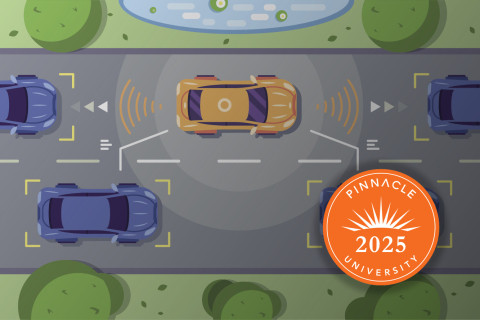
Unavoidable Catastrophe
At Pinnacle University earlier this year, our team presented on the current state of the property/casualty industry’s understanding of and modelling for increased frequency and severity of extreme climate events.
Climate change is a controversial topic in some circles. Yet the impact and incidents (in both frequency and severity) of extreme weather events has become more apparent with each passing year.
A useful and illustrative measure of extreme weather events are catastrophic (CAT) insurance claims, herein defined as any occurrence resulting in more than $25 million in insured damages. The insurance industry has seen an increase in large CAT claims over the last decade relative to historical experience – with notable recent events including hurricanes Harvey, Irma and Matthew.
As a consequence, the four North American actuarial organizations have developed a tool to quantify and account for such extreme events and the link to climate change. They have developed an Actuaries Climate Index, or ACI, an educational tool to help inform actuaries, public policymakers and the general public on changes in such measures over the years. As climate change is having a financial impact on insurance consumers and the industry, actuaries are well-positioned to model what has transpired over several decades.
The ACI uses six characteristics to indicate extreme weather conditions: excessive warm temperatures, excessive cold temperatures, excessive rainfall, strong wind power, rise and fall of sea level and excessive periods of drought. A look at ACI development shows a steady increase since 1991. The five-year moving average is up one full standard deviation in 2016, with an even more exaggerated increase in the moving average over the last six years.
With the ACI and similar measures in mind, how should actuaries use such information when contemplating or working with CAT modeling? Traditional actuarial techniques are likely to fall short when analyzing (at least historically) infrequent losses, as they are not very adaptable to rapidly changing environments.
Fortunately, machine learning has allowed actuaries to model catastrophic events more accurately using predictive analytics techniques. One major hurdle with such an approach relates to developing model assumptions. There is a relatively small number of CAT data points sufficient for full statistical credibility. This is certainly going to be a major area of conversation in the reinsurance and excess markets.
The challenges of uncertainty, combined with a lack of credible data points, pose a challenge for actuaries seeking to adequately forecast reasonable provisions for CAT claims. Consequently, obtaining affordable reinsurance premium quotes will be a perennial concern.
The hardening of the reinsurance markets may push more risk managers to utilize self-insured retentions, insurance-linked securities or options in the alternative markets. Such approaches may provide cost savings, but it is imperative that actuaries’ models adequately contemplate a range of potential outcomes to mitigate the risk of insolvency.
Certainly, the quantifiable impacts of climate change have raised eyebrows for property/casualty actuaries. As we learn more about how, and to what extent, the environment might continue to change, it will be interesting to see how actuaries adapt and hone in on effective funding techniques with increasing levels of confidence. If CAT claims have truly become more frequent, the insurance industry will definitely need to be know how to prepare and adjust.
Mitch Caster is an actuarial analyst II with Pinnacle Actuarial Resources working remotely in Indiana. He holds a Bachelor of Science degree in quantitative analysis from Franklin College (Ind.) and has experience in assignments involving loss cost projections, loss reserving and enterprise risk captive markets. He is actively pursuing membership in the Casualty Actuarial Society (CAS) through the examination process.



